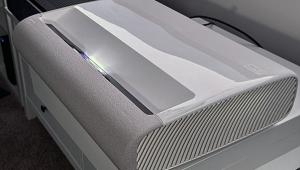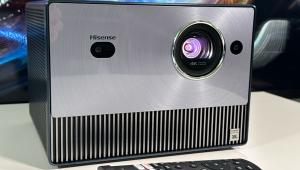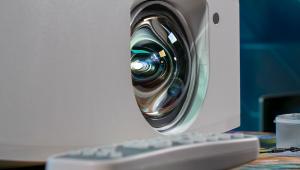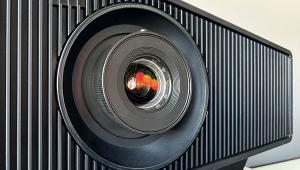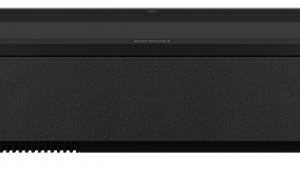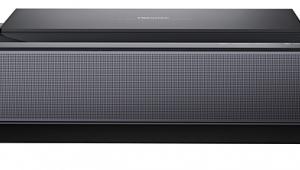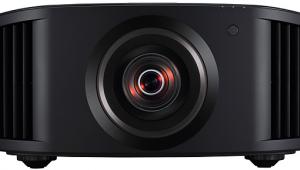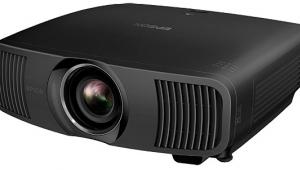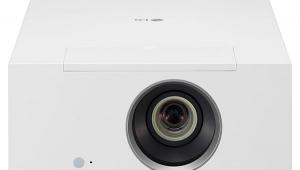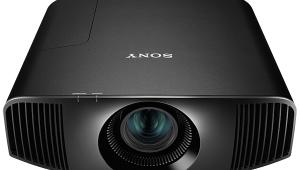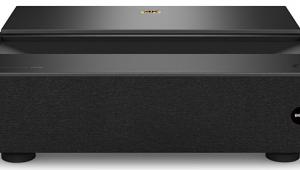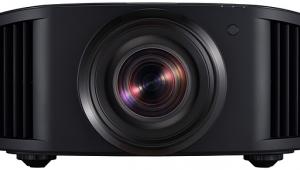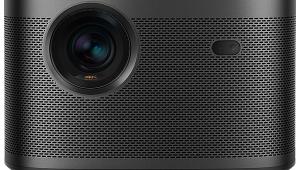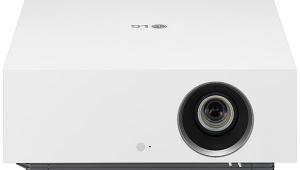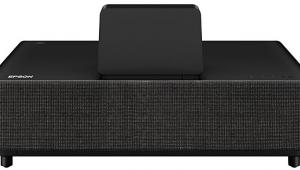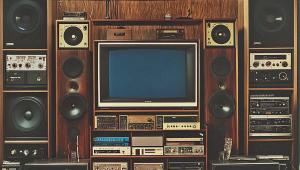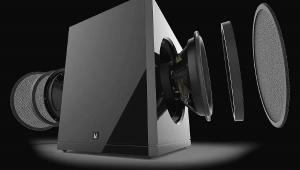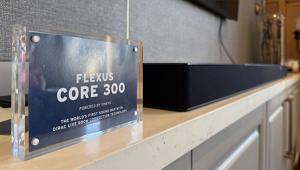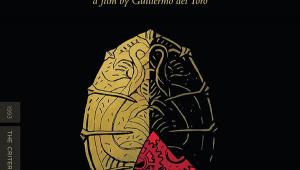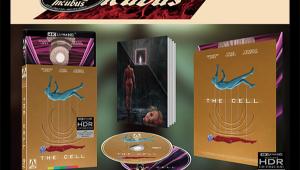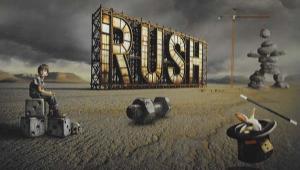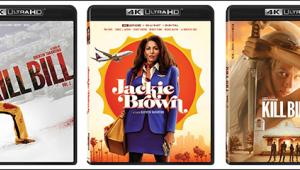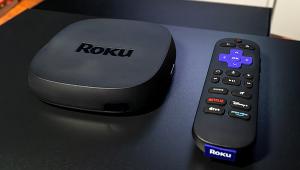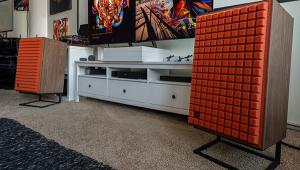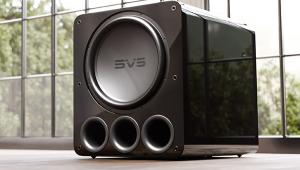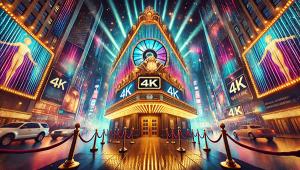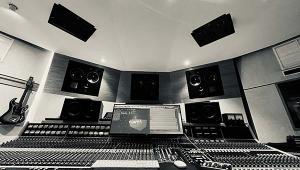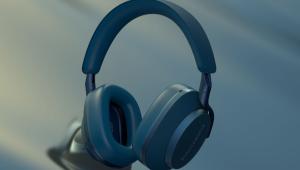Your post has given me a lot of knowledge. Let me once again believe in the power of words, providing inspiration, and thus gaining inspiration, allowing you to acquire knowledge and broaden your horizons. You are truly talented and excellent, and I wish you better and better connections game
InFocus ScreenPlay 5700 DLP Projector Page 2
Outdoor scenes also looked reasonably good from the ScreenPlay 5700. Highlight blockups and blowouts were occasionally present, but they were far less noticeable than with the Plus HE-3100. The night-game scenes in Any Given Sunday are good tests of a projector's ability to retain highlight detail. The bright areas of Al Pacino's craggy brow lost surface texture through the ScreenPlay 5700; the Sim2 Millennium 800 retained this visual information.

Even right out of the box, without any tweaking, the 5700's color fidelity rated two thumbs up. Subtle variations of red, such as the two red-leather dresses in VH1's Divas (Image Entertainment D9231MWDVD), were well-delineated. Blue skies and tropical waters were well-saturated in Blue Crush. Even green, which on most DLPs usually veers toward the iridescent side of neutral, looked fairly natural through the InFocus. The factory-default color setup did have a wee bit too much green, however: The lead character's blond hair in Blue Crush took on a slightly greenish hue. Knocking the green gain down three points neutralized this problem. After a bit of judicious color correction, the ScreenPlay 5700's color balance looked remarkably neutral.
With only a single lens, DLP projectors should theoretically avoid the convergence problems of CRT projectors, whose thrdee different lenses each projects an image that must be perfectly superimposed on the images from the other two lenses. A DLP can produce an image that actually looks much sharper than a CRT's. The ScreenPlay 5700's all-glass lens was certainly tack-sharp—maybe too sharp. Using the built-in grid test pattern, it was obvious that the outer edges of the 5700's picture area were just as sharp as the center. But the test grid also revealed some convergence problems—problems that in a DLP projector, with its single lens, can arise from slight errors in the optical path or lens aberrations. On the left side of the screen, magenta lined up slightly to the right of the other colors, while on the right side, green fell slightly to the right of the other colors. Only in the center of the frame did the green and magenta show no tendencies to stray. Watching regular program material, I could see this problem only if I got very close to the screen and looked for it. At normal viewing distances, I could see no negative effects caused by these slight convergence errors.
The extraordinary sharpness of the 5700's lens also clearly revealed the DMD chip's intrinsic micromirror grid pattern. If you try to produce too large an image from the projector, you might need to defocus the lens ever so slightly to minimize the grid's visual impact. Otherwise, the picture can seem overly grainy.
Because the ScreenPlay 5700 has its own built-in Faroudja DCDi deinterlacer, there seemed little point in sending it a 480p signal. I tried, and quickly went back to an interlaced signal. The DCDi certainly did a fine job with motion artifacts. During chapter 7 ("Swordplay/Wordplay") of The Princess Bride (MGM Home Entertainment 90804) the sand under the duelers' feet exhibited minimal noise-induced sparkle and shimmer. Displaying the Avia test disc's moving zone-plate pattern, the ScreenPlay 5700 showed no chromatic sparkle or color fringing whatsoever. Video Essentials' Snell & Wilcox moving zone plate looked equally pristine. Occasional signs of motion artifacts appeared on VE's montage of images—during the scene showing tall grass waving in front of some modern buildings, or the slow pan across the stadium seats. Still, overall, the 5700's circuits handled these difficult tests quite well.
 Unlike earlier DLP projectors, the ScreenPlay 5700's native aspect ratio is 16:9, not 4:3. Because of this, 4:3 material is "windowboxed" within the 16:9 frame, leaving black bands on either side of the image. Ideally, your screen should have a 16:9 aspect ratio as well, and any 4:3 image will always be within a 16:9 frame. The only disadvantage of this arrangement is that 4:3 pictures will be comparatively smaller through this projector than through a 4:3 native projector. I suspect this will spur 5700 owners to embrace HD as opposed to standard NTSC broadcasts, because HD will fill their screens in a far more satisfying way. On the other hand, the 5700's resolution is not up to HD specs, so owners will not receive the full benefit of HD images. Of course, you can use the projector's Natural Wide display mode to stretch 4:3 material to fill a 16:9 area, but the results are anything but natural.
Unlike earlier DLP projectors, the ScreenPlay 5700's native aspect ratio is 16:9, not 4:3. Because of this, 4:3 material is "windowboxed" within the 16:9 frame, leaving black bands on either side of the image. Ideally, your screen should have a 16:9 aspect ratio as well, and any 4:3 image will always be within a 16:9 frame. The only disadvantage of this arrangement is that 4:3 pictures will be comparatively smaller through this projector than through a 4:3 native projector. I suspect this will spur 5700 owners to embrace HD as opposed to standard NTSC broadcasts, because HD will fill their screens in a far more satisfying way. On the other hand, the 5700's resolution is not up to HD specs, so owners will not receive the full benefit of HD images. Of course, you can use the projector's Natural Wide display mode to stretch 4:3 material to fill a 16:9 area, but the results are anything but natural.
The 5700 did a fairly decent job of delivering the whole picture area with only minimal cutoff. On the Avia disc's pixel-cropping chart, the numbers were 7 on the right, 9 on the top, 9 on the left, and 4 on the bottom. While not perfect, this amount of cutoff shouldn't seriously cramp a DVD's frame.
One area where the projector's performance might have a negative impact on your overall enjoyment of movies is its level of audible noise. The combination of sound from the fan and color wheel could be distracting during quiet passages. The simple solution is to move the projector as far away from your primary viewing position as possible. Fortunately, the 5700's long-throw lens lets you move the projector back to where its noise will be less obnoxious.
Conclusion
Last week, the editor of the guitar magazine I regularly write for called to inquire as to whether the projector I'd suggested to him a year ago was still the best one to get. I was forced into the uncomfortable position of contradicting my previous recommendation. The performance of DLP projectors has been improving at quite a clip: every six months, the bar of what you can expect for a given price is substantially raised. A year ago, a projector with the ScreenPlay 5700's capabilities would have cost three times as much. A year from now, the same quality of projector might be available for half its current cost.
Still, just as with computers, if you dwell on the fact that whatever you buy today will be eclipsed within a year, you'll never know the joys of having such a product now. When that device is the InFocus ScreenPlay 5700, those joys include a sharp, bright picture, great versatility, flexible installation options, and elegant ergonomics. The only black marks are its typical DLP rainbow artifacts (which may or may not bother you), moderately high fan noise, and its long-throw lens, which might not permit as large an image as desired in small rooms.
Although plasma displays have captured the popular imagination, if people compared the ScreenPlay 5700's picture with that from a comparably priced plasma display, most would choose the ScreenPlay. Projectors rule. And for now, at its price point, so does this InFocus DLP. Considered as a whole package, the 5700's deficiencies do little to detract from its overall value. It stacks up very well against other DLP projectors I've reviewed, especially at the price. If I weren't so sensitive to the rainbow effect, I'd have no problem living happily with an InFocus ScreenPlay 5700.
- Log in or register to post comments


It is simple to notice that the difference is not very great thanks snake io to the analytical data and graphics on the chart. Data collection requires a lot of work, and this demonstrates the success. That extra little thrill that the greatest HD can deliver when recreated at its highest resolution wasn't quite there.

Your post has given me a lot of knowledge. Let me once again believe in the power of words, providing inspiration, and thus gaining inspiration, allowing you to acquire knowledge and broaden your horizons. Anal Beads

The Hole IO is to consume objects smaller than your hole. As you consume more objects, your hole grows larger, allowing you to consume bigger objects and even smaller holes of other players.

Out of the box, our review sample of the 5700, with its color-temperature control set to 6500 kelvins, produced the results shown in the "Before" curve in the accompanying graph. The 7500K setting measured between 7150K and 7490K from low (30 IRE) to high (100 IRE); the 9300K setting measured from 8300K to 8960K across the same range.
cricut fishing designs
flower images for cricut
Cricut 3d fonts for logos

The information metrics are really guaranteed. Enjoy the different source updates. Learn the parameters and use them to your best coreball advantage. The sound quality is really pleasing to the eyes and ears.

